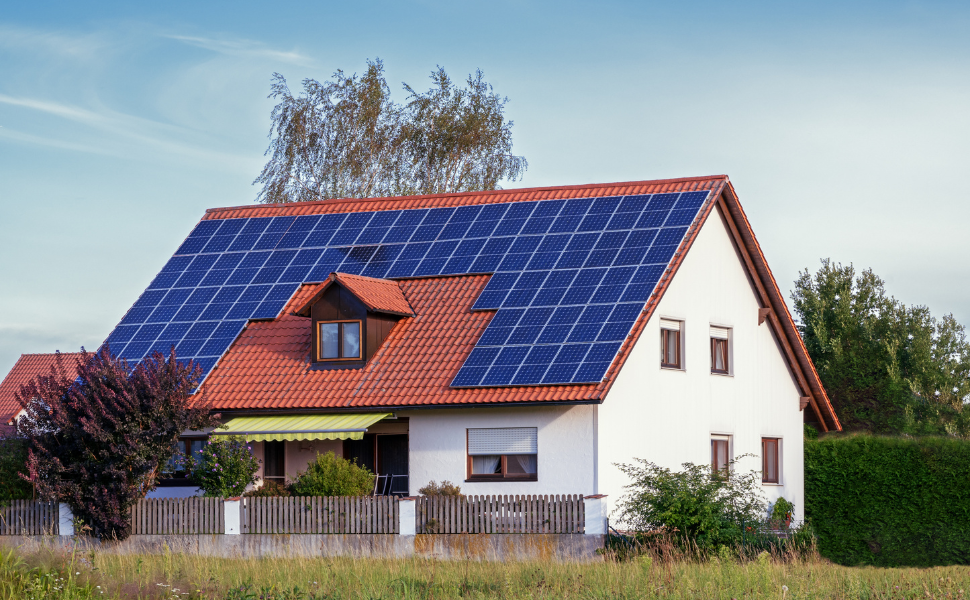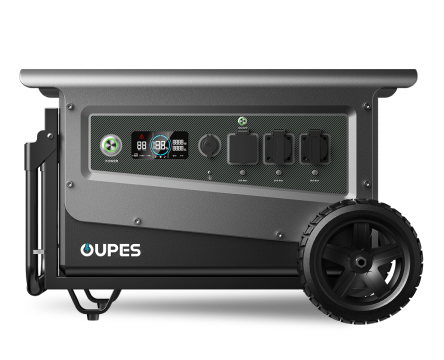
- Overview
- Key Requirements for Successful Off-Grid Living
- Electricity & Power Independence
- Water Sourcing & Purification
- Heating, Cooling & Shelter
- Off-Grid Food Production & Storage
- Communication & Emergency Preparedness
- Off-Grid Energy Options Comparison
- FAQ
Overview
Living off the grid means relying on no public utilities—electricity, water, natural gas, or sewage systems. It is a lifestyle built around self-sufficiency, sustainability, and resilience. With natural disasters and energy costs rising, more people are embracing off-grid living for both independence and security.
This guide provides a professional, research-based overview of the essentials needed to live off the grid, with practical strategies supported by data from the U.S. Department of Energy (DOE), the Environmental Protection Agency (EPA), and other authoritative sources.
Portable power stations and solar generators—such as those made by OUPES—play an increasingly vital role in modern off-grid systems due to their low maintenance needs, high safety standards, and flexibility.
Key Requirements for Successful Off-Grid Living
To successfully live off the grid, you must secure the following essentials:
- A reliable source of electricity (solar, battery storage, hybrid systems)
- Clean water supply (wells, rain catchment, or nearby natural sources)
- Heating and cooling (wood stoves, insulation, efficient HVAC)
- Food production (gardening, livestock, long-term storage)
- Waste management (composting toilets, septic tanks)
- Emergency communication (satellite, radios, backup power)
Electricity & Power Independence
1. Solar Power: The Core of Modern Off-Grid Living
Solar energy is the most practical and widely adopted form of off-grid electricity. According to the DOE, solar is one of the most reliable renewable sources with consistently declining cost per watt. Pairing solar panels with battery storage allows you to run lighting, refrigeration, communication devices, and even high-load appliances.
Portable power stations and solar generators—such as the OUPES Mega Series—are particularly useful for:
- Cabins and tiny homes
- Mobile off-grid living (RVs, vans, remote travel)
- Backup power during cloudy periods or winter
- Silent and emission-free energy needs
2. Battery Storage for Consistent 24/7 Power
Even with strong solar production, nighttime and winter require reliable battery storage. Lithium iron phosphate (LiFePO4) batteries are the best choice due to:
- Long cycle life (3500+ cycles)
- Excellent thermal stability
- High safety compared with other chemistries
Portable power stations offer plug-and-play storage with built-in inverters, MPPT charge controllers, and multiple output ports.
3. Backup Energy Sources
Even off-grid residents often rely on a backup source:
- Gas generators (high power, but noisy and fuel-dependent)
- Wind turbines (situational, needs consistent high winds)
- Portable solar generators (reliable, scalable)
Most off-grid homes use solar as the primary source and backup generators for extended storms.
Water Sourcing & Purification
1. Main Water Sources
According to EPA guidelines, an average adult needs at least 1 gallon (3.7 L) of drinking water per day. Off-grid living requires planning for:
- Wells (most reliable long-term)
- Rain catchment systems
- Nearby rivers or lakes
- Truck-delivered water (common in remote desert areas)
2. Water Filtration & Safety
Natural water sources may contain pathogens such as Giardia or E. coli. A layered purification system is recommended:
- Pre-filtration (sediment filters)
- Activated carbon filters (taste & chemicals)
- UV purifiers or boiling (kills microorganisms)
- Reverse osmosis (for questionable sources)
Heating, Cooling & Shelter
1. Winter Heating
In cold climates, reliable heating is critical. The U.S. Energy Information Administration (EIA) reports that heating accounts for 40–60% of total home energy consumption. Off-grid heating options include:
- Wood stoves (most common)
- Propane heaters
- Passive solar heating
- High-efficiency insulation
2. Summer Cooling
Cooling is more complex off the grid due to its high electricity demand. Strategies include:
- High-efficiency DC fans
- Shaded windows and reflective roofing
- Evaporative coolers (in dry climates)
- Running AC only with adequate battery + solar
Large portable power stations like OUPES Mega models can run a small AC unit for hours, but users should manage cooling strategically.
Off-Grid Food Production & Storage
1. Food Growing Methods
- Raised-bed gardening
- Greenhouses for winter growing
- Micro-livestock (chickens, rabbits)
- Permaculture systems for low-maintenance yields
2. Food Storage Methods
For long-term off-grid survival, proper food storage is crucial:
- Canning (highly shelf-stable)
- Fermentation
- Root cellars for natural cooling
- Solar-powered refrigeration
Modern portable power stations allow refrigerators and freezers to run even during extended outages, offering greater food security.
Communication & Emergency Preparedness
1. Essential Off-Grid Communication Tools
- Satellite communicators
- HAM/GMRS radios
- Offline GPS navigation tools
- Battery-powered or solar radios
2. Emergency Preparedness Essentials
- First-aid kit
- Backup power (portable stations, solar panels)
- Fire extinguishers
- Water reserves
- Evacuation plan
Comparison: Energy Options for Off-Grid Living
| Energy Source | Reliability | Cost | Maintenance | Best For |
|---|---|---|---|---|
| Solar + Battery (OUPES) | High | Moderate | Low | Full-time off-grid homes |
| Gas Generator | High (short term) | Low upfront, high fuel cost | High | Backup emergencies |
| Wind Turbine | Variable | High | Moderate | Wind-rich regions |
FAQ
1. Is it possible to live fully off the grid in all climates?
Yes, but extreme climates require more preparation. Battery storage and insulation become especially important in harsh winters or very hot summers.
2. How much solar power do I need to live off the grid?
Most off-grid homes require 3–7 kW of solar and 10–20 kWh of battery storage. Smaller cabins or RV setups can operate on far less, especially with an efficient portable power station.
3. Can portable power stations replace a home solar system?
Portable power stations like those from OUPES are ideal for small homes, RVs, mobile off-grid living, and emergency backup. Full-size homes may still require larger fixed solar-battery systems.
4. What is the biggest challenge of off-grid living?
Energy management—especially during winter—is the most common challenge. Maintaining adequate water and heating also requires planning and backup systems.
5. Are solar generators reliable enough for long-term off-grid living?
Yes. LiFePO4-based systems offer long cycle life, high safety, and stable performance, making them a dependable off-grid energy source for years.




























